Discover the dark side of the dairy industry. Learn about its own infamous criminals in this thrilling series covering seven notorious figures.
Think of the notorious criminals like Pablo Escobar with the poppy trade or Al Capone dominating the illicit alcohol industry. But did you know that the dairy industry has its shadowy figures? Welcome to the hidden world of dairy crime.
In the first of this series, we uncover the dark secrets of the dairy sector and expose how some have turned dairy farming into a hub for deceit and illegal activities. These dairy criminals have stories of intrigue, scandal, and murder.
The Master of Holstein Thievery: Lercy Austin’s Tale of Deception
Lercy Austin, notorious for his exploits in livestock theft, particularly targeting Holstein dairy cows, evaded capture for several years, perpetrating his crimes with remarkable skill and elusiveness. His operations spanned a broad geographic area, from the Midwest to the Deep South, rendering him a formidable challenge for authorities.
His criminal activities resulted in substantial financial hardship for rural farmers, leading to numerous bankruptcies and significant losses. The farm press of the 1920s, recognizing the widespread impact of Austin’s thefts, raised alarms. J.C. Hays, Secretary of the Michigan Holstein Association, was notably vocal in his efforts to bring Austin to justice. On November 15, 1924, Hays penned a letter to the Holstein-Friesian World, stating:
Editor World:
A swindler named H.C. Helms, purportedly from Nashville, Tennessee, has defrauded one of our Holstein sales managers out of $650. This same individual, not limiting his fraudulent activities, also swindled a Jersey sales manager out of $100. Operating across various states, this swindler is described as approximately six feet tall, with light brown hair and brown eyes, and speaking with a distinct southern accent. Often referred to as a ‘very smooth gentleman,’ he should be pursued vigorously.
Despite such warnings, Austin continued his illegal escapades until his eventual capture in Waterloo, Iowa. Operating under numerous aliases such as H.C. Helms, L.C. Lingle, and B.L. Baxton, Austin was sentenced to seven years in the Iowa State Penitentiary.
Upon his release, Austin’s past fraudulent actions caught up with him. Two Michigan dairymen, victims of his previous schemes, re-arrested him with the aid of the local sheriff, ensuring that he faced justice back in Michigan.
Austin’s modus operandi involved posing as a legitimate cattle buyer. He meticulously selected his targets, often timing his fraudulent transactions to coincide with bank closing hours on Saturdays. Armed with counterfeit credentials such as forged telegrams, passbooks, and bank drafts, his cheques were inevitably worthless, leaving his victims responsible for substantial financial losses.
Austin’s schemes were remarkably effective, bolstered by his genuine expertise in dairy cattle, his personable demeanor, and his strategic choice of widely dispersed locations to perpetrate his crimes.
The Tainted Legacy of Dr. Morley Pettit: Ontario’s Veterinary Fraudster
Dr. Morley Pettit, a once-prominent veterinary surgeon in Southern Ontario’s tobacco district, saw his career veer disastrously off course. Despite early promise, Pettit’s life unraveled, possibly due to what we would now diagnose as sociopathic or neurotic tendencies—though such terms were not in common parlance at the time. Alternatively, his fall from grace could have stemmed from living beyond his means during the dire days of the Great Depression.
Pettit’s criminal journey began with relatively minor offenses. In May 1927, he was found guilty of theft and fraudulent concealment of a tractor valued at $963.00. After buying the tractor without paying for it, he hid it in the woods and repainted it to avoid its repossession by the rightful owner, the International Harvester Co. For this offense, he was fined $100.00 and placed on two years’ probation, with the stipulation that he support his family in a manner befitting Christian values.
However, these early infractions only foreshadowed a deeper descent into criminality. By spring 1930, Pettit faced six counts of fraud tied to livestock procurement. His audacious scheme, which remarkably escaped the notice of others, involved persuading breeders to mail him purebred livestock, particularly young bulls. Masquerading as a forward-thinking dairy, stock, and tobacco farmer, he claimed ownership of grade cattle on par with purebreds and touted a $3,000.00 farm improvement initiative.
Pettit’s modus operandi transcended breed distinctions. According to evidence presented, he sold these valuable animals to butchers at ludicrously low prices as soon as they arrived. Often, under the cover of night, these bulls and heifers were spirited directly from the railway car to the slaughterhouse.
Rather than paying farmers directly, Pettit issued promissory notes or deferred payments, continually evading final settlement with what the Crown Attorney later called “devious excuses and representations.” One well-regarded livestock breeder testified that in his 20 years of shipping purebred livestock—on both cash and credit terms—Pettit was the only person to exploit his trust.
Dr. Pettit’s fraudulent activities involved substantial sums and attracted notice from cattle breeders across Ontario. While he initially managed to avoid criminal court, he regularly appeared in division courts at Windham Centre and Simcoe. Local newspapers ironically praised his “outstanding craft and intellectual seamanship,” often enabling him to dodge serious legal repercussions. Nevertheless, he incurred 51 judgments in Windham, Delhi, and Simcoe courts, totaling $13,137.51.
Once criminal charges were pressed, victims from Ontario and beyond sought redress, only to find that existing judgments against Pettit obstructed restitution efforts. Additionally, his wife held the title to their 175-acre farm and its chattels, further complicating matters. The property itself was highly regarded, complete with splendid buildings.
Dr. Pettit faced judgment on June 29, 1930, before His Honour Judge T.W. Godfrey at the Provincial Court in Simcoe. Defended by A.A. Winter, K.C., appointed by the court due to Pettit’s claimed indigence, the proceedings saw Winter rigorously advocating for his client at every opportunity.
Despite Winter’s diligence, Pettit was convicted on two counts of fraud and sentenced to five years at Portsmouth Penitentiary. In delivering the sentencefrey, Judge God remarked, “Yours has been a peculiar career. You were born, I understand, of estimable parents in a good, god-fearing, law-abiding community. This community has sent out some splendid men, some of the best jurists of the dominion, from one of Ontario’s primary, most enterprising counties. You were brought up by godly parents and educated in an ideal environment. Your family name, except for you, is untarnished in this county. I am reliably informed that at least one of your victims became a victim because he made an inquiry and heard that the name ‘Pettit’ was good in Norfolk. You probably played on that name to your undoing.”
“I regret that I have to give a severe sentence in your case that will be a warning to yourself and others like you. The sentence of this court is that you be transferred to the Portsmouth Penitentiary for five years.”
The Elusive Duncan Spang: A Life of Holstein Cattle and Criminal Intrigue
When Duncan Spang passed away at St. Michael’s Hospital on March 27, 1983, the entire community mourned his loss, albeit with mixed sentiments. Even the farmers he had swindled with his non-sufficient funds (N.S.F.) checks acknowledged a certain respect. However, they often spoke critically of his character flaws. Roy Ormiston, a former 4-H member and junior farmer who knew Spang well, poignantly remarked, “What a career he could have had if only he had taken a different path.”
Born on his parents’ farm in Claremont, Ontario, in 1911, Spang displayed an early and fervent interest in farming, particularly in Holstein cows. As a young man, he delved into the cattle trade, primarily dealing in Holsteins and spending countless hours on the road. Unfortunately, it wasn’t long before he found himself ensnared in legal troubles. He allied with John White, who operated a filling station and a used car lot in Greenbank, Ontario.
White was entangled in fraudulent activities with a corrupt bank manager who facilitated illicit car loans. White convinced Spang to apply for loans on vehicles he had never seen. When the banks approved these loans, the proceeds were diverted to White. The Royal Canadian Mounted Police (RCMP) eventually exposed the scam, charging White, the bank manager, and their associates with fraud. While Spang’s trial lasted three days and resulted in a suspended sentence, White and the bank manager received two-year prison terms.
In 1935, the Holstein Association revoked Spang’s membership for multiple misdemeanors, including falsifying an animal’s pedigree. This expulsion severely hampered his business activities, effectively “blackballing” him. He could no longer transfer animals into his name, complicating his already precarious financial situation.
Struggling financially, Spang frequently issued checks that the bank would not honor. A resident from the Durham district commented, “It was widely known that accepting a check from Spang was a risky venture.”
Despite his legal and financial difficulties, Spang had a discerning eye for cattle. Arnold Winter, a herdsman from Oak Ridge, credited Spang with locating some of Oak Ridge’s finest cattle. Nevertheless, potential buyers remained wary of his notorious bounced checks.
In the late 1950s, Spang pursued daughters of Rosafe Domino, among the best cattle owned by Eastern Breeders. He also discovered noteworthy cows like Royalake Perseus Kimmy, who won the grand championship at the Ontario County B&W Show under Harold Grove’s ownership. Declined from the army due to failing a hearing test just before World War II, Spang communicated in whispers, a remnant of his partial deafness.
Spang and his brother Harvey (“Hub”), both bachelors, resided together in a farmhouse in Pickering Township. Hub managed a nearby butcher shop. On December 12, 1982, Spang returned home around nine o’clock, startling three intruders. An assailant shot him in the stomach.
Despite his grievous injury, Spang managed to drive to his brother’s meat shop and summon the police. The perpetrators were swiftly apprehended. When Spang succumbed to his injuries on March 27, 1983, the men faced murder charges. Robert Perrault, 22, from Seagrave Township, received a significant prison sentence.
The Uncatchy Miscreant: Jack C. Miller’s Herds of Fraud
The media often resorts to catchy monikers when referring to professionals embroiled in controversies. While Dr. Sam Sheppard was labeled “the society osteopath,” and Dr. Charles Smith as “the disgraced pathologist,” Pennsylvania’s Jack C. Miller intriguingly escaped such branding. The press simply called him “Jack C. Miller,” despite his notorious escapades.
Born and raised in Collegeville, Pennsylvania, Miller’s journey began with service in World War II. He later graduated near the top of his class from the Philadelphia College of Pharmacology. In a surprising career pivot, Miller shifted from pharmacology to the bull semen trade two decades later. Employed by Curtiss Breeding Service, he ascended to district manager before his abrupt dismissal led him to establish his own venture, importing Holstein semen from Canada.
In October 1971, Miller’s curiosity took him to United Breeders in Guelph, Ontario, where he initially posed as an interested visitor. Through charm and cunning, he befriended key personnel such as Lowell Lindsay, a senior analyst, and Wouter Manten, the distribution manager. By his third visit, Miller’s familiarity with the facility allowed unrestricted access, further cemented by his friendship with Albert Ball, a truck driver.
With insider connections secured, Miller commenced smuggling stolen semen into the U.S. with the aid of Purvis and Ball. Several secretive transfers were made, one even at a church parking lot along Highway 6. Wilbur Shantz, United’s manager, grew suspicious but lacked concrete proof. A late-night observation of shady activities led him to alert the authorities.
Dr. G.W. Snider from Goshen, Indiana, was among those duped into purchasing 2,000 ampules of Pickland Citation R. semen from Miller at suspiciously low prices. His subsequent inquiries with the bull’s owner and United confirmed the fraudulent nature of the semen, culminating in arrests on theft, conspiracy, and fraud charges.
Investigations uncovered Miller’s deceit, from relabeling to refilling low-quality or empty straws with water. Seized evidence included tanks and records detailing his operations. Facing smuggling charges in the U.S., Miller’s guilty plea resulted in a 90-day jail sentence, a $10,000 fine, and probation, delaying his appearance for Canadian charges. With Ball turning Crown witness, Canadian courts ultimately sentenced Miller to 33 months, supplemented by 18 months for conspiracy.
The scandal led to widespread destruction of contaminated semen as Canadian authorities quarantined and tested tanks, involving prominent bulls like Roybrook Telstar and Bond Haven Nugget. The case’s breakthrough came from Sergeant John Ogilvie, who detected inconsistencies in ampule printing.
Miller’s later years saw him driving a school bus and serving more jail time for narcotics offenses. He passed away on February 3, 2019, leaving behind a legacy that included a Japanese landscaping business, honored for its gardens in the Smithsonian archives.
Gordon Atkinson: The Holstein Fraudster of Barrie
“I will not assist any endeavor in portraying Gordon Atkinson in a favorable light,” declared a close female relative, her voice tinged with bitterness, “because he was an evil person, a psychopath.”
“He had some bad points, all right, and you had to be careful,” conceded a man who had engaged in considerable business with Atkinson. “He wasn’t someone you would want as a role model for your kids.”
“Not so quick,” countered a seasoned Holstein breeder from Barrie. “Gordon had his share of fraud charges, no denying that, but don’t speak ill of him in front of me. He was the best neighbor I ever had. If you ever needed anything, he would be the first man there to help.”
Gordon Atkinson, for better or worse, epitomized the energy and vigor that defined the Holstein business of the 1960s and ’70s. When prized cows came under the auctioneer’s hammer, he was invariably present, bidding with a fierce determination that often secured victory. At the Brubacher 300 sale in 1968, he made headlines by acquiring Seiling Perseus Anna for $37,500. Just two years later, at Orton Eby’s sell-out, he snagged Heritage Rockanne, Anna’s daughter, for $40,000—a record sum for a bred heifer. On that same day, he also procured Brubacher Supreme Penny for $23,000 and Seiling Adjuster Pet (EX) for $15,500.
For over a decade, Atkinson’s checks bore astonishing figures. At Fred Lingwood’s dispersal in 1973, he shelled out $50,000 for Llewxam Nettie Piebe A. The ensuing years saw him acquire further costly animals. At the Romandale dispersal in 1979, he paid $66,000 for Romandale Telstar Brenda (EX).
But where did this endless stream of money come from? Speculations ranged from an inherited fortune to shrewd investments in Toronto real estate. Regardless of the cows’ profitability—or lack thereof—Atkinson persisted in his purchases. The Brenda cow showed her appreciation by producing 15 bull calves sired by Rosafe Citation R. “They’re maternal brothers of the $400,000 bull,” Atkinson would proudly say. “No, I’m not losing sleep. They’re insured.”
Tragedy struck on February 27, 1981, when a neighbor reported a blaze at Atkinson’s barn. Sixty head of cattle perished. “No big deal,” Gordon said, noting the calves were insured for $50,000. A second fire two years later claimed even more lives. Meanwhile, Seiling Perseus Anna, sent to Viapax for flushing, suffered a debilitating fall and had to be euthanized, fueling rampant rumors.
More cows met untimely ends, including Farlow Valiant Rosie, who failed to live up to her All-Canadian 5-year-old potential and succumbed under mysterious circumstances. Atkinson, unfazed, recouped his losses through insurance.
Skeptical, the Royal Insurance Company demanded proof of value. Atkinson sought Vernon Butchers for favorable appraisals. “Give me the values I want, and I’ll take care of you,” he promised Butchers. “Fifty thousand dollars today and another fifty when I get the insurance money.” Butchers complied, and Atkinson received a check totaling $2,098,500.
The Royal Insurance Company, growing increasingly suspicious, began probing deeper. The O.P.P. bugged Atkinson’s phone, using a Wisconsin breeder to call him. The breeder inquired about killing an insured cow. “It’s easy,” Atkinson unwisely advised, “Use succinylcholine. Inject it under her tail.”
John Atkinson, Gordon’s upstanding son, turned to the O.P.P. Anti-Rackets Squad, seeking immunity. “Tell us everything,” they urged. Subsequently, Gordon and George Atkinson faced fraud charges—not arson—for accumulating $12 million through deceitful means. Discovering John’s role as a Crown witness, George attempted to run him over with his car in a desperate act of vengeance.
The Royal Insurance Company pursued legal action, suing the Atkinsons for $5,000,000. A plea deal led to suspended sentences, probation, and an order for restitution. Ultimately, they declared bankruptcy, leading the bank to seize the Meadowlake farm and its herd. Gordon Atkinson’s demise came by heart attack at the Toronto home of Mona Cimarone. Following his death, the Meadowlake cattle, once prized, sold for mere peanuts at Brubacher’s.
The Enigma of Gregory Wilcom and James Wright: Suicide, Fraud, and Holstein Cattle
The facts remain shrouded in mystery, the circumstances still in doubt, rendering this case intriguingly complex. Lindsey Gruson, a New York Times reporter, delved into a grim scenario where two men, Gregory Wilcom and James Wright, inexplicably took their own lives. Through interviews with the deceased’s widows, Detective William Graham of South Carolina, and local sheriffs who had scrutinized the case, Gruson illuminated the murky waters in a January 1994 Times article but arrived at no definitive conclusions.
Two decades later, an innocuous conversation with a Holstein breeder from upstate New York resurfaced the case for a writer. Three cows had ostensibly been killed for insurance fraud. The writer, recognizing the names Wilcom and Wright, grew intrigued. Wilcom had been a successful Holstein exhibitor and co-owner of notable cows like Aitkenbrae Starbuck Ada, while Wright served as the herdsman at Hilltop-Hanover Farm under Dave Younger. Sensing scandal, Ed Morwich, a seasoned writer of Holstein history books and a lawyer, embarked on his own investigation, contacting the same sources Gruson had and exploring neglected facets of the case.
The perplexing question lingered: Why did Wilcom and Wright end their lives? On March 8, 1993, Wilcom sat beside his wife, Pamela, on a couch, grasping her hand. “Cows will come and go, but you and I are forever. Through good times and bad, I love you,” he professed. Wilcom requested his premier exhibitor banner to be placed in his coffin before ingesting strychnine and expiring. Five days later, Wright rented a motel room and fatally shot himself in the chest.
Authorities suspected a connection between their deaths and an insurance scheme involving three poisoned Holstein cows, for which Wilcom and Wright had claimed $330,000 from insurance policies. Yet, after nine months of probing, law enforcement remained no closer to uncovering the truth. “You don’t kill yourself over three cows,” remarked Carl R. Harbaugh of the Frederick County, Maryland, Sheriff’s Department.
In December 1992, insurance malfeasance expert Detective William Graham had been contracted by the company insuring Fran-Lou Valiant Splendor, a cow co-owned by Wilcom and Wright. During his interview with Wright in Preble, NY, Wright seemed unperturbed by his loss, asserting that the cow’s death was sudden. Dr. Joseph Wilder, Wright’s veterinarian, concluded that the cow had suffocated in a bunk feeder, a seemingly accidental death. Wright’s justification for the $250,000 insurance claim on the $7,500 animal eluded Graham.
Wright’s history with Wilcom was marred by misfortune. Wilcom had sold him two prized cows that soon perished on Wright’s farm. Graham’s inquiries with Wright’s acquaintances and professional contacts, alongside veterinarians and insurance companies, yielded no initial suspicions. However, he uncovered alarming details: two of Wright’s barns had experienced suspicious fires, and the three dead cows had been insured with different companies. Wright’s decision to summon a new vet for Splendor’s autopsy raised further red flags.
Next, Graham visited Wilcom in Ijamsville, MD, a family steeped in agribusiness, owning a restaurant, racetrack, and two farms. Despite Wilcom’s sudden emergence in the high-end Holstein industry, another cow had died under suspicious circumstances as Graham arrived—a purported case of feed poisoning. Willis Conard, a former Hanover Hill herdsman, insinuated that Wilcom and Wright might have employed succinyl-choline, a muscle relaxant that causes instant, traceless death, to kill their animals.
Suspecting financial misconduct, Graham confronted Wilcom with a demand for full financial disclosure and a sworn statement. Wilcom abruptly ended the call. Both men, fearing exposure, left home on March 4. Wilcom returned three days later with a severe migraine and injected himself with Banamine, a cattle drug not suited for human use, leading to his death. Wright followed suit five days later.
Initial law enforcement theories suggested that fear of Graham’s scrutiny drove the suicides, but this was deemed improbable. Even if convicted of fraud, Wilcom and Wright would likely have faced probation rather than substantial jail terms. The mystery deepened when an F.B.I. agent was reported tailing the men at the Royal Winter Fair in Toronto. Rumors hinted at Wright being in witness protection, allegedly for trafficking cattle to Colombian drug lords.
Opinions varied widely. “Wilcom was just a kid, died at 26,” commented Norman Nabholz. “Showing cows is an addiction, and Greg couldn’t support it financially.” John Buckley, an Ontario breeder with substantial business dealings with Wilcom, observed Wilcom thriving in 1993 but had no insights into the suicides.
“They probably bought Fran-Lou Valiant Splendor just to get her insured,” speculated a New York dairyman. While the cow had a commendable pedigree, it wasn’t exceptional otherwise. Law enforcement lamented the lack of collaboration in resolving the case. “There’s no telling what we could have found had we all talked,” reflected Detective Peter Clagett. “Both men are dead now, so even if we find something, there’s nobody to arrest.” Ultimately, the insurance company settled the Splendor claim for $7,500.
The Bottom Line
Delving into the murky depths of the dairy industry, we unravel the extraordinary narratives of eight criminals whose transgressions have indelibly tainted the sector. From Lercy Austin’s infamous Holstein thefts to the intricate fraud schemes devised by Duncan Spang and Jack C. Miller, these stories of cunning deception underscore the unfortunate reality that no industry is beyond the reach of criminal machinations. The cases involving Gordon Atkinson, Gregory Wilcom, and James Wright vividly illustrate the profound entanglement of lives and livelihoods with fraud and devastation.
Want to read more on these stories and many more: Check out The Chosen Breed and The Holstein History by Edward Young Morwick
Anyone who appreciates history will enjoy either the US history (The Holstein History) or the Canadian History (The Chosen Breed) by Edward Morwick. Each of these books is so packed with information that they are each printed in two separate volumes. We had a chance to interview Edward – Edward Young Morwick – Country Roads to Law Office and got a real sense of his passion and quick wit which also come shining through in his books. Be sure to get your copies of this amazing compilation of Holstein history.
Key Takeaways:
- The dairy industry, like other agricultural sectors, has its share of notorious criminals with intricate and deceptive schemes.
- Lercy Austin managed to evade law enforcement while engaging in livestock theft for several years.
- Dr. Morley Pettit faced multiple fraud charges related to the procurement and sale of purebred livestock, leading to multiple arrests.
- Duncan Spang was expelled from the Holstein Association in 1935 due to repeated misdemeanors.
- Jack C. Miller was a known smuggler in the bull semen trade, adding to the dairy industry’s dark side.
- Gordon Atkinson defrauded farmers out of millions through a series of deceptive practices centered around Holstein cattle breeding.
- Gregory Wilcom and James Wright’s story intertwines suicide, fraud, and Holstein cattle, symbolizing the complex and often tragic nature of dairy industry crimes.
Summary: The dairy industry is not without it’s share of deceit and illegal activities, causing financial hardship for rural farmers. Lercy Austin, known for livestock theft, evaded capture for years. Dr. Morley Pettit, a former veterinary surgeon, faced six counts of fraud related to livestock procurement. He persuaded breeders to mail him purebred livestock, selling them at low prices. Upon his release, his fraudulent actions caught up with him, and he was re-arrested by two Michigan dairymen. Duncan Spang was revoked from the Holstein Association in 1935 for multiple misdemeanors. Jack C. Miller, a bull semen trader, was known for his smuggling activities. Gordon Atkinson, a Holstein breeder, was charged with fraud, not arson, for accumulating $12 million through deceitful means.
 Join the Revolution!
Join the Revolution!






 Join the Revolution!
Join the Revolution!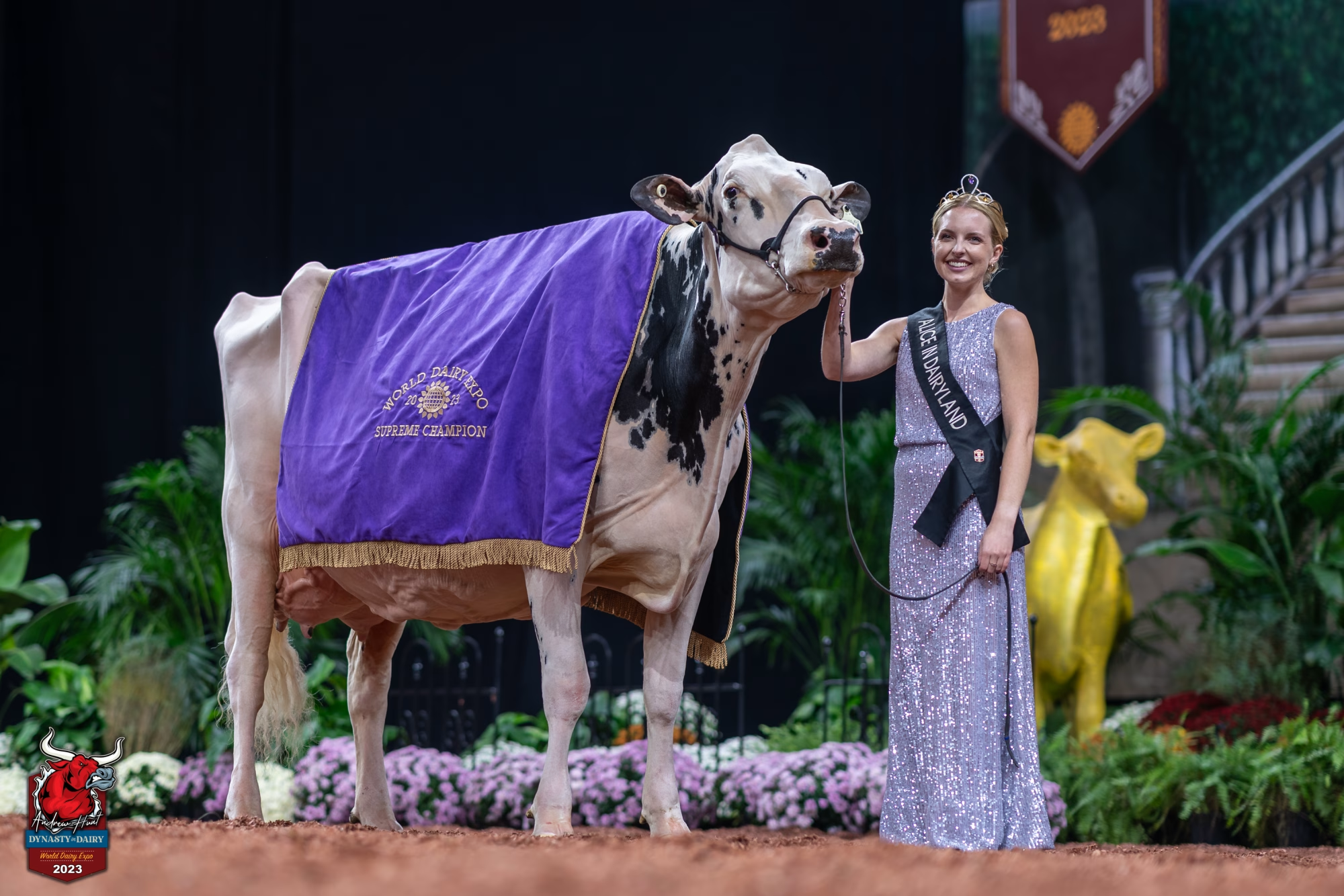
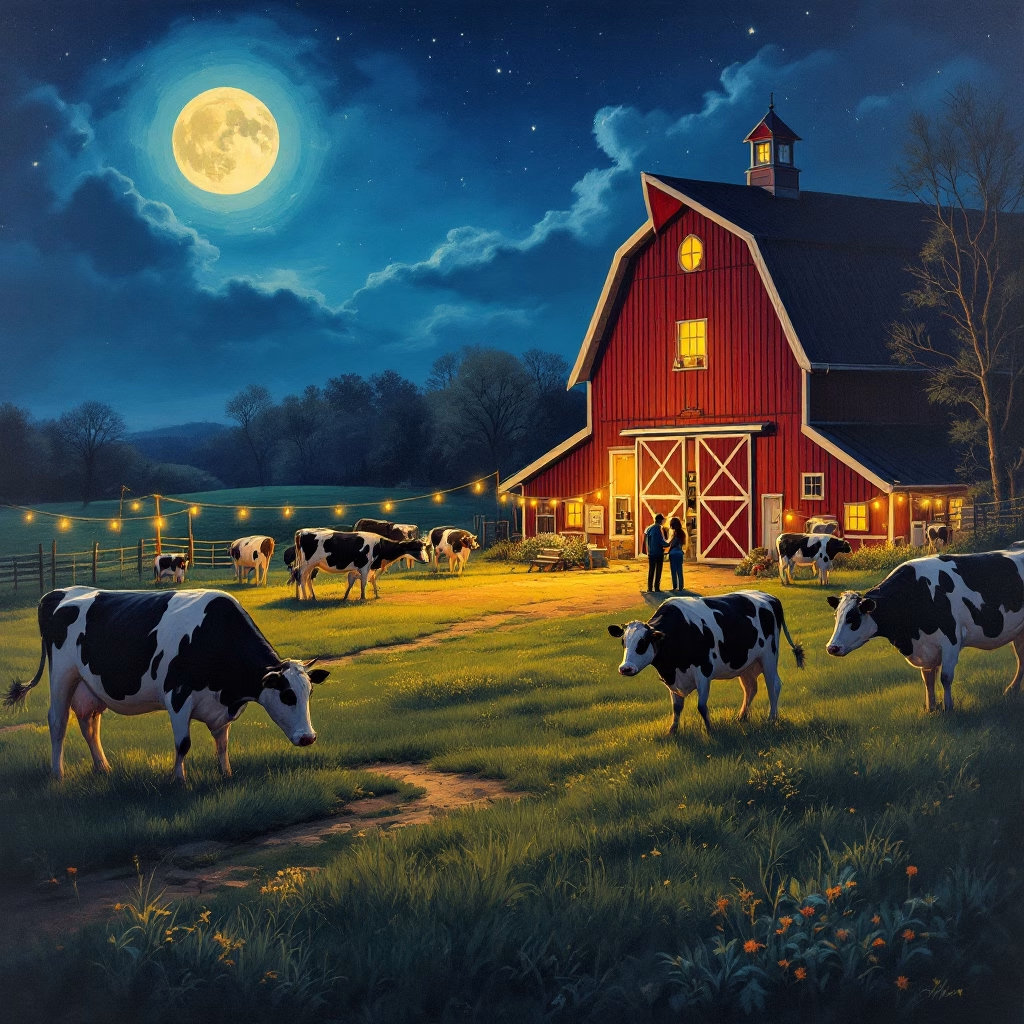

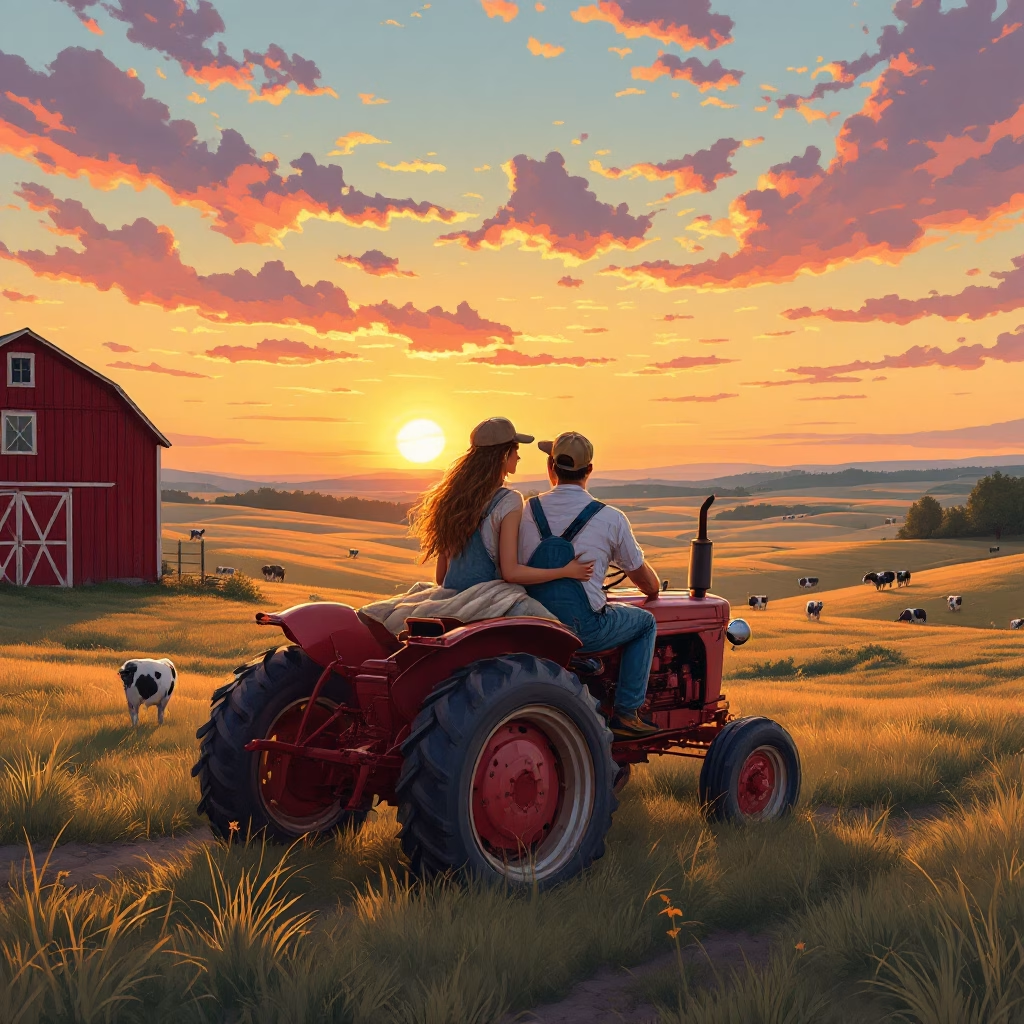

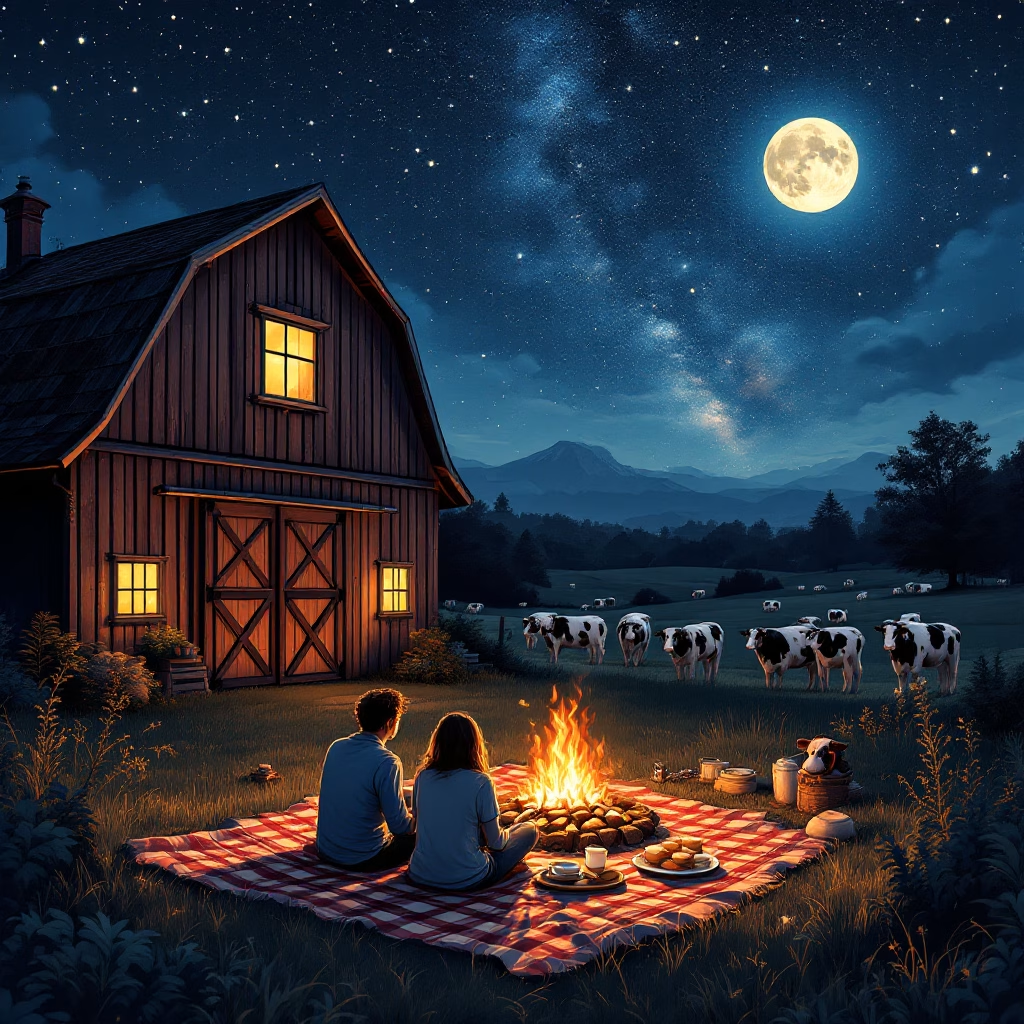



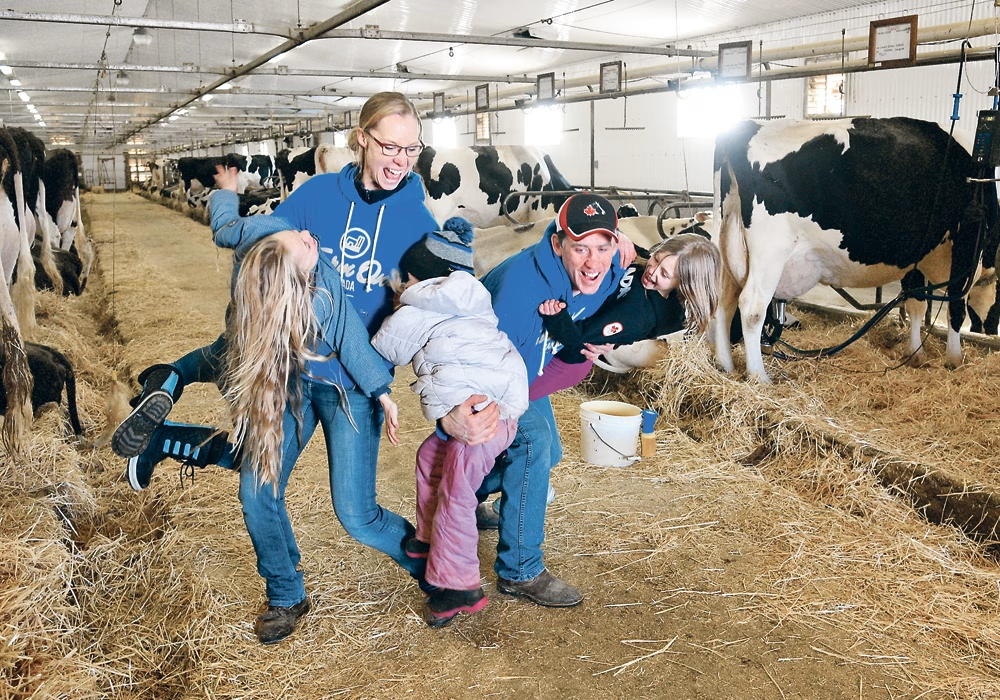




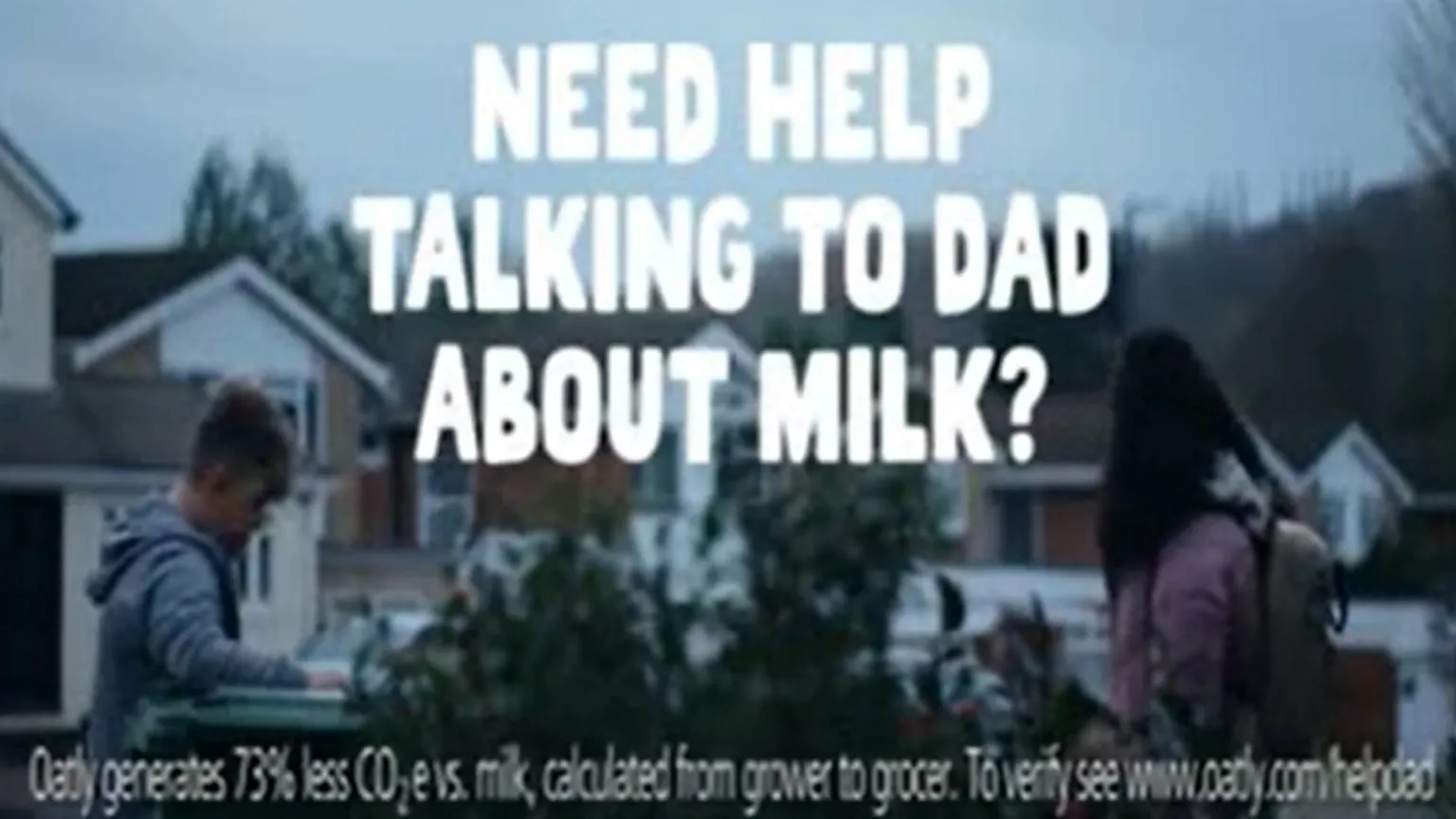



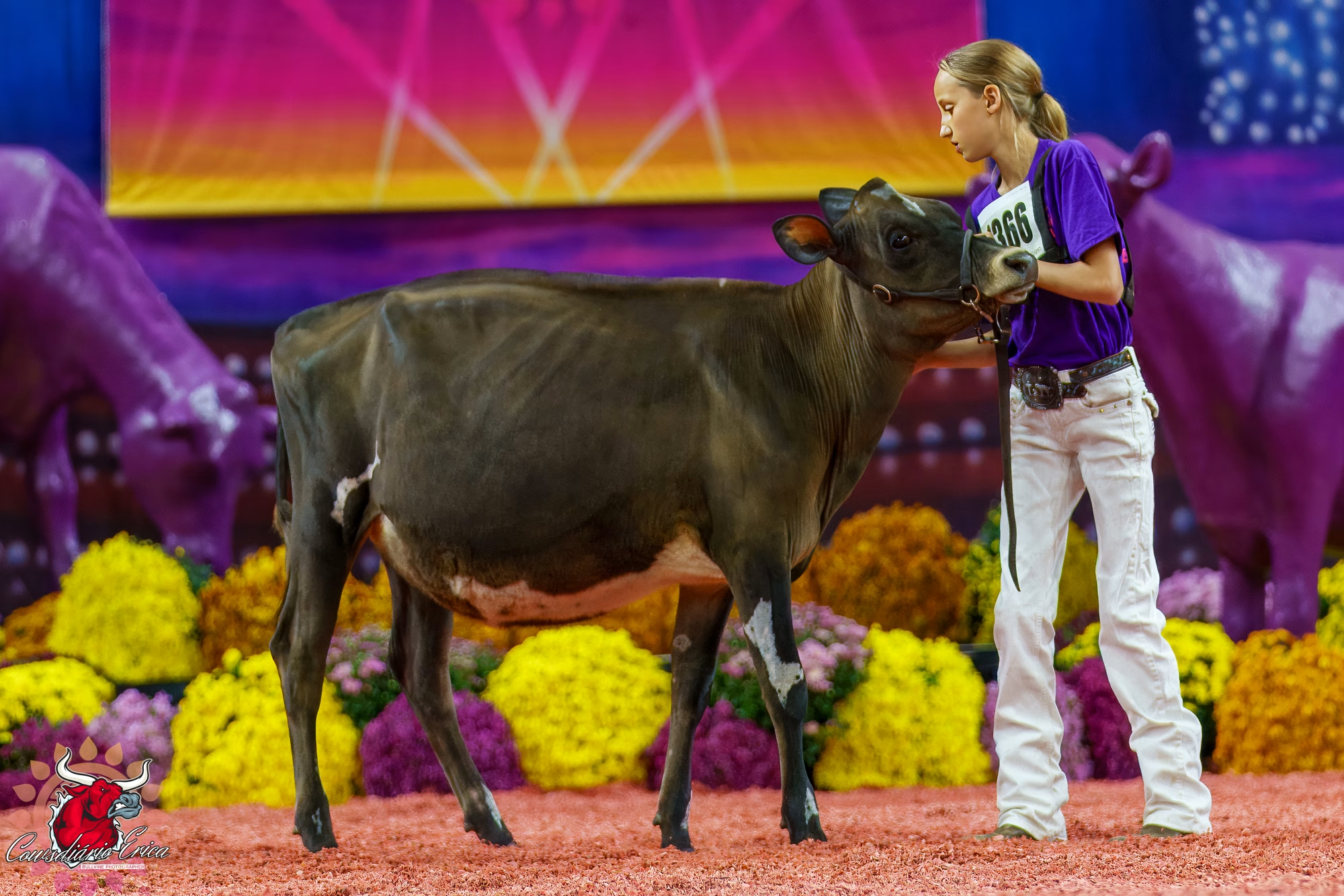
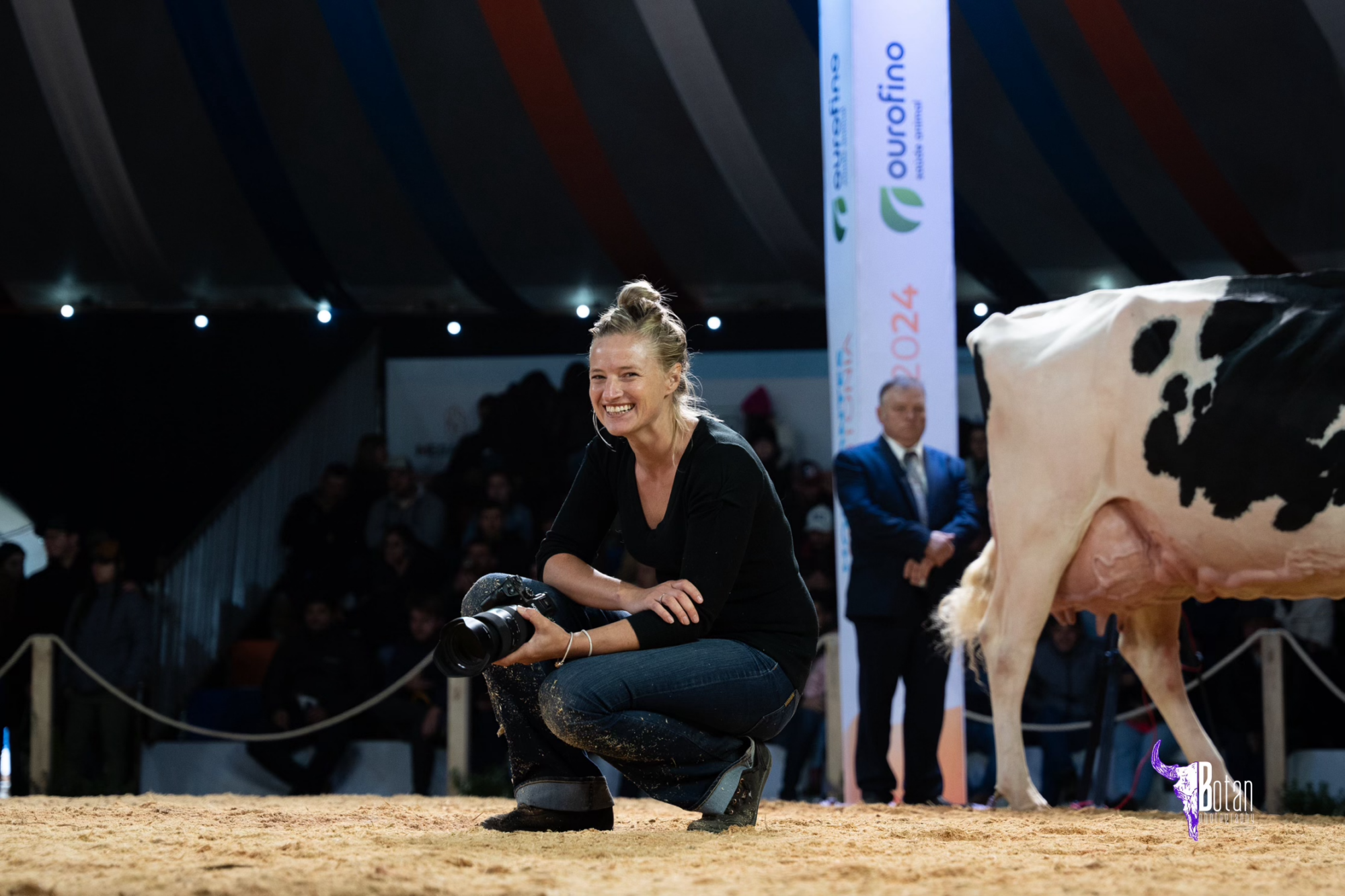
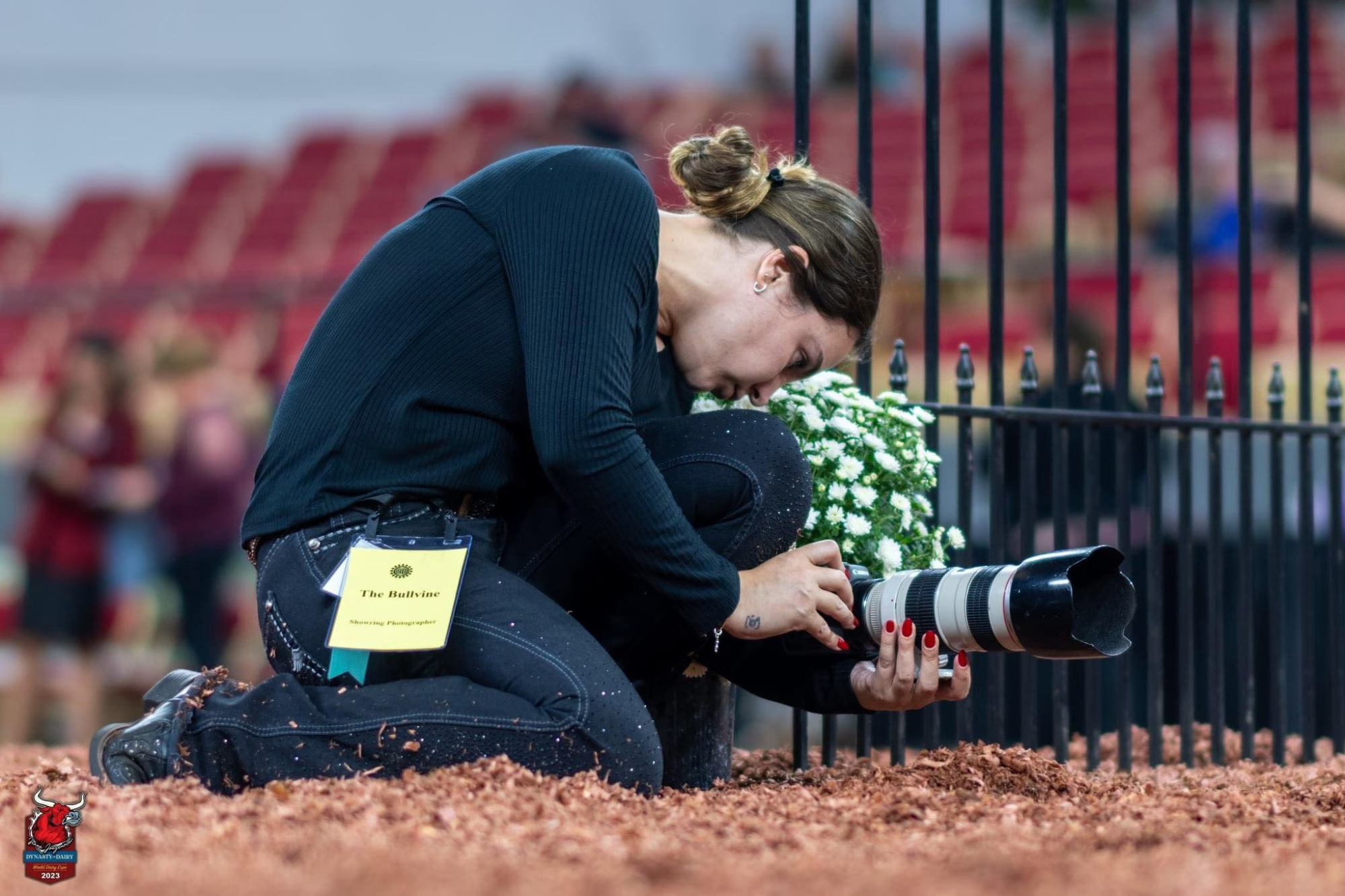


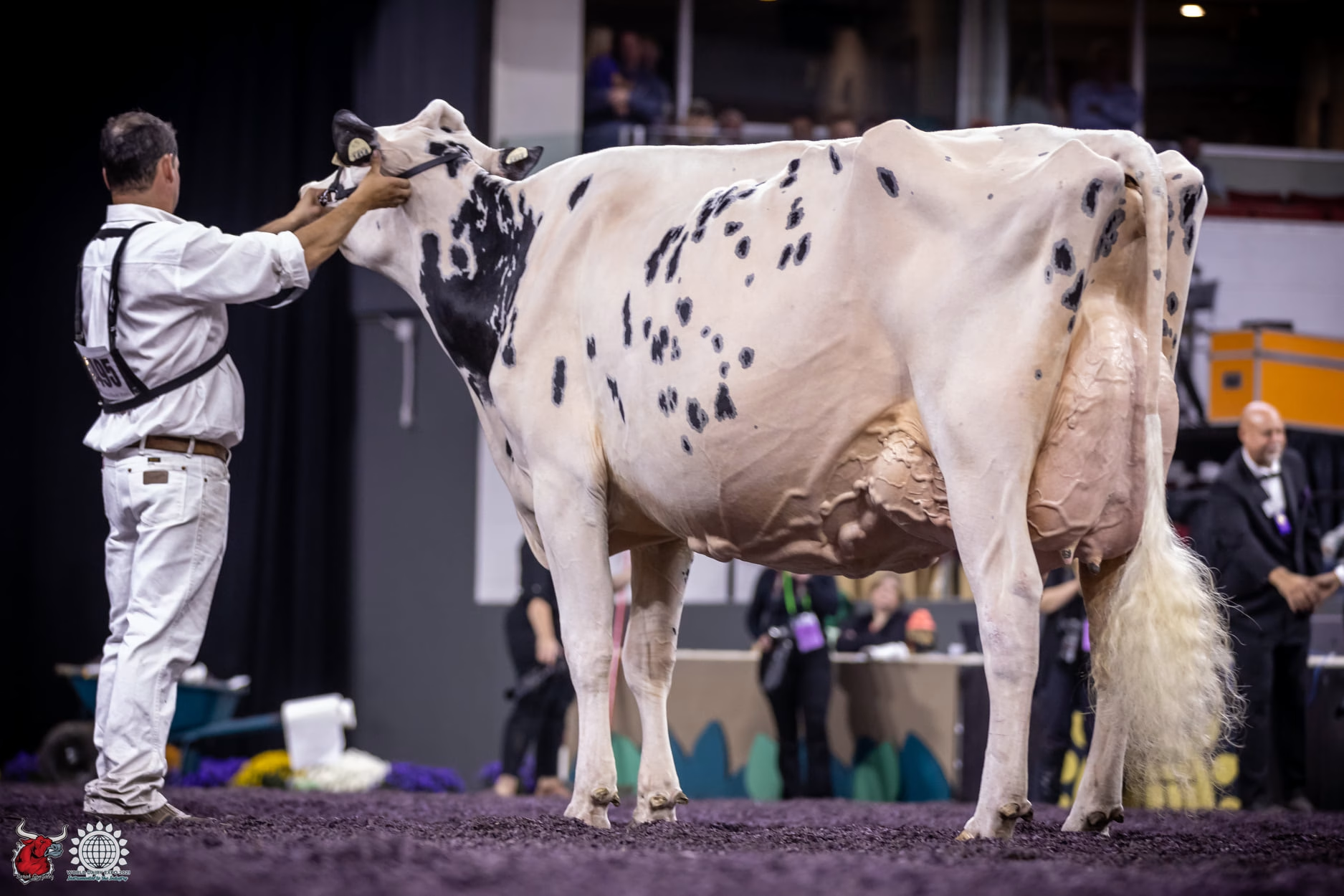

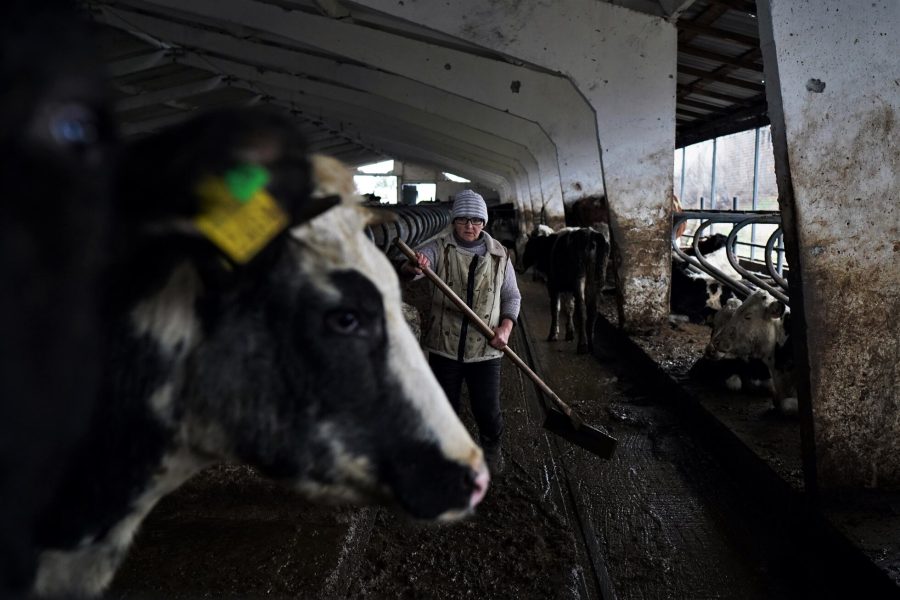
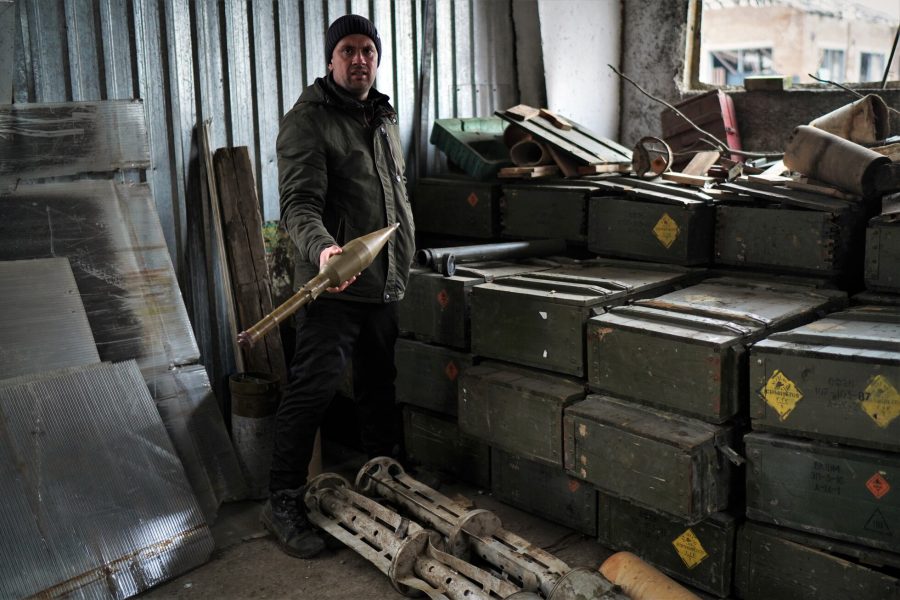






 Discover how the dairy cattle show ring can adopt marketing strategies from the NFL. These proven tactics can boost your show’s visibility and engagement.
Discover how the dairy cattle show ring can adopt marketing strategies from the NFL. These proven tactics can boost your show’s visibility and engagement.
 Discover how the Dairy Cattle Show Ring can be revitalized, drawing insights from Formula 1’s ‘Drive to Survive’ success story. Ready to transform the game?
Discover how the Dairy Cattle Show Ring can be revitalized, drawing insights from Formula 1’s ‘Drive to Survive’ success story. Ready to transform the game?




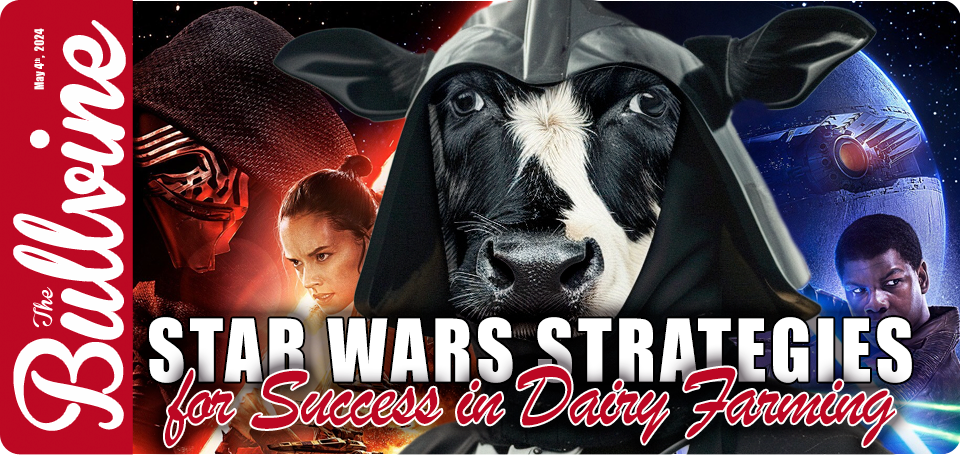
 A long time ago in a galaxy far, far away…there were hardworking, resilient folks, not unlike
A long time ago in a galaxy far, far away…there were hardworking, resilient folks, not unlike  If you’re familiar with the Star Wars franchise, then you know the Force represents an elemental balance in the universe. It’s an energy field that binds all living things together. The Force in Star Wars could be compared to the delicate balance dairy farmers must maintain between productivity and environmental responsibility.
If you’re familiar with the Star Wars franchise, then you know the Force represents an elemental balance in the universe. It’s an energy field that binds all living things together. The Force in Star Wars could be compared to the delicate balance dairy farmers must maintain between productivity and environmental responsibility. 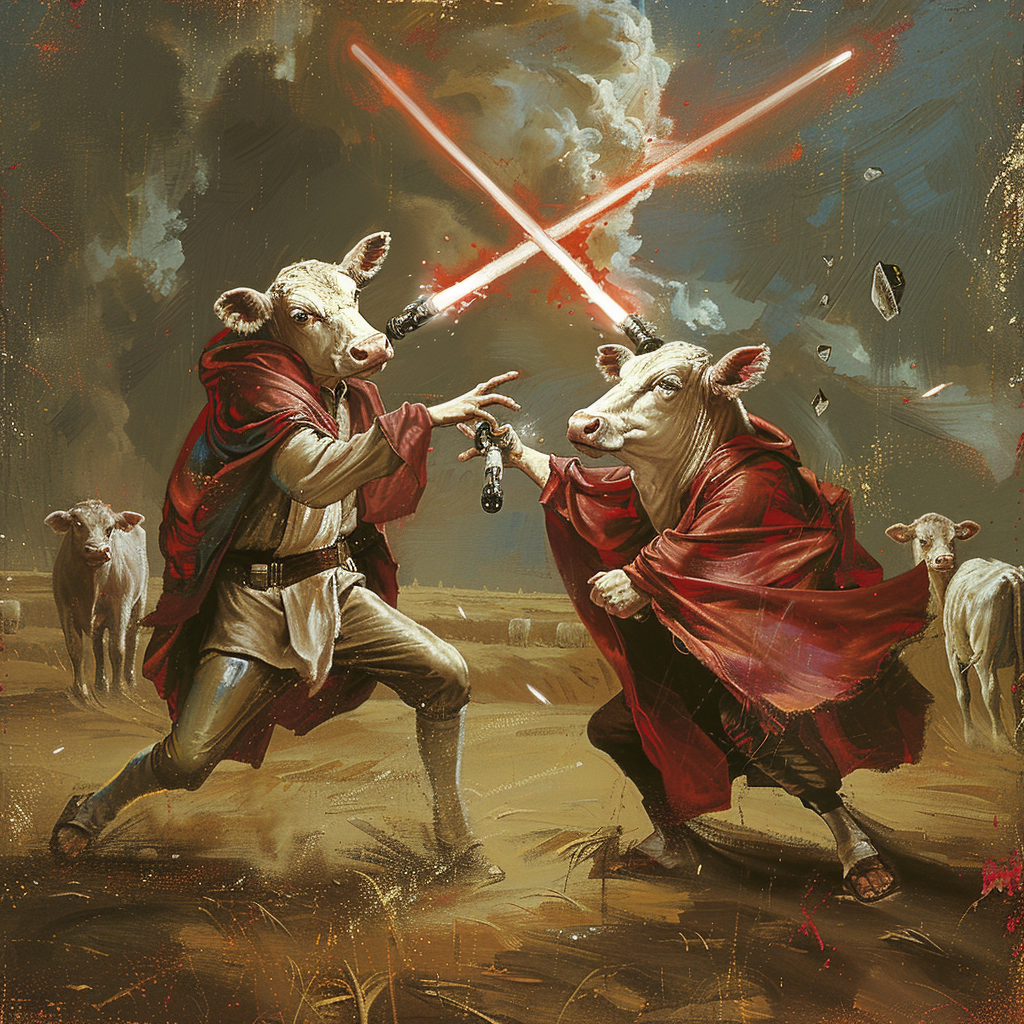 Remember how the Rebel Alliance brought down the Empire in Star Wars? The key to their victory was collaboration and collective effort, a principle that applies equally in the galaxy of dairy farming. Your farm may not face the Death Star, but it does encounter challenges that can be tackled efficiently through cooperation.
Remember how the Rebel Alliance brought down the Empire in Star Wars? The key to their victory was collaboration and collective effort, a principle that applies equally in the galaxy of dairy farming. Your farm may not face the Death Star, but it does encounter challenges that can be tackled efficiently through cooperation. 




